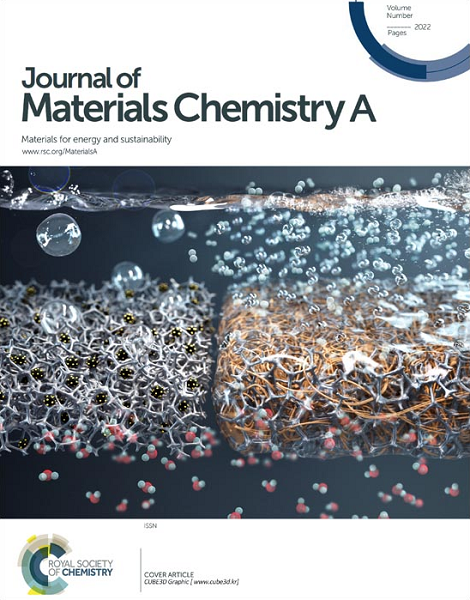在富镍阴极NCM83上原子层沉积薄TiO2层,提高循环稳定性
IF 10.7
2区 材料科学
Q1 CHEMISTRY, PHYSICAL
引用次数: 0
摘要
富镍层状氧化物(ncm)是高能量密度锂离子电池(LIBs)极具潜力的正极材料。然而,由于在循环过程中存在严重的界面副反应和相变,ncm的循环稳定性较差。本研究表明,通过原子层沉积(ALD)方法在NCM83 (lini0.83 co0.11 mn0.060 o2)表面涂覆一层薄薄的均匀二氧化钛(TiO2),在1C下循环100次后,其循环稳定性显著提高,容量保留率为87.3%,而在相同的电化学测量条件下,未涂覆TiO2的NCM83的容量保留率仅为44.3%。XPS和ToF-SIMS表征结果表明,包覆TiO2层促进了富lif稳定的阴极/电解质界面相(CEI)的形成,有效抑制了界面副反应,减缓了相变。原位XRD表征结果表明,TiO2包覆层由于机械约束作用调控了相变过程,减轻了晶体畸变和应力积累。这项工作为高能量密度锂离子电池的富镍阴极材料的改性提供了一种有效的方法。本文章由计算机程序翻译,如有差异,请以英文原文为准。
Atomic layer deposition of a thin TiO2 layer on nickel-rich cathode NCM83 for improved cycling stability
Nickle-rich layered oxides (NCMs) are promising cathode materials for high energy-density lithium-ion batteries (LIBs). However, NCMs suffer from poor cycling stability because of severe interfacial side reactions and phase transitions during cycling. Here, we show that by coating a thin and uniform layer of titanium dioxide (TiO2) on the surface of NCM83 (LiNi0.83Co0.11Mn0.06O2) using the atomic layer deposition (ALD) method, its cycling stability is significantly improved with 87.3% capacity retention after 100 cycles at 1C, in sharp contrast to NCM83 without TiO2 coating with only 44.3% capacity retention under the same electrochemical measurement conditions. XPS and ToF-SIMS characterization results reveal that the coated TiO2 layer promotes the formation of a LiF-rich stable cathode/electrolyte interphase (CEI), which effectively suppresses interfacial side reactions and mitigates phase transitions. In-situ XRD characterization results show that the TiO2 coating layer regulates the phase transition process due to mechanical confinement effects, which alleviates crystal distortion and stress accumulation. This work offers an effective approach to modifying nickel-rich cathode materials for high energy-density LIBs.
求助全文
通过发布文献求助,成功后即可免费获取论文全文。
去求助
来源期刊

Journal of Materials Chemistry A
CHEMISTRY, PHYSICAL-ENERGY & FUELS
CiteScore
19.50
自引率
5.00%
发文量
1892
审稿时长
1.5 months
期刊介绍:
The Journal of Materials Chemistry A, B & C covers a wide range of high-quality studies in the field of materials chemistry, with each section focusing on specific applications of the materials studied. Journal of Materials Chemistry A emphasizes applications in energy and sustainability, including topics such as artificial photosynthesis, batteries, and fuel cells. Journal of Materials Chemistry B focuses on applications in biology and medicine, while Journal of Materials Chemistry C covers applications in optical, magnetic, and electronic devices. Example topic areas within the scope of Journal of Materials Chemistry A include catalysis, green/sustainable materials, sensors, and water treatment, among others.
 求助内容:
求助内容: 应助结果提醒方式:
应助结果提醒方式:


